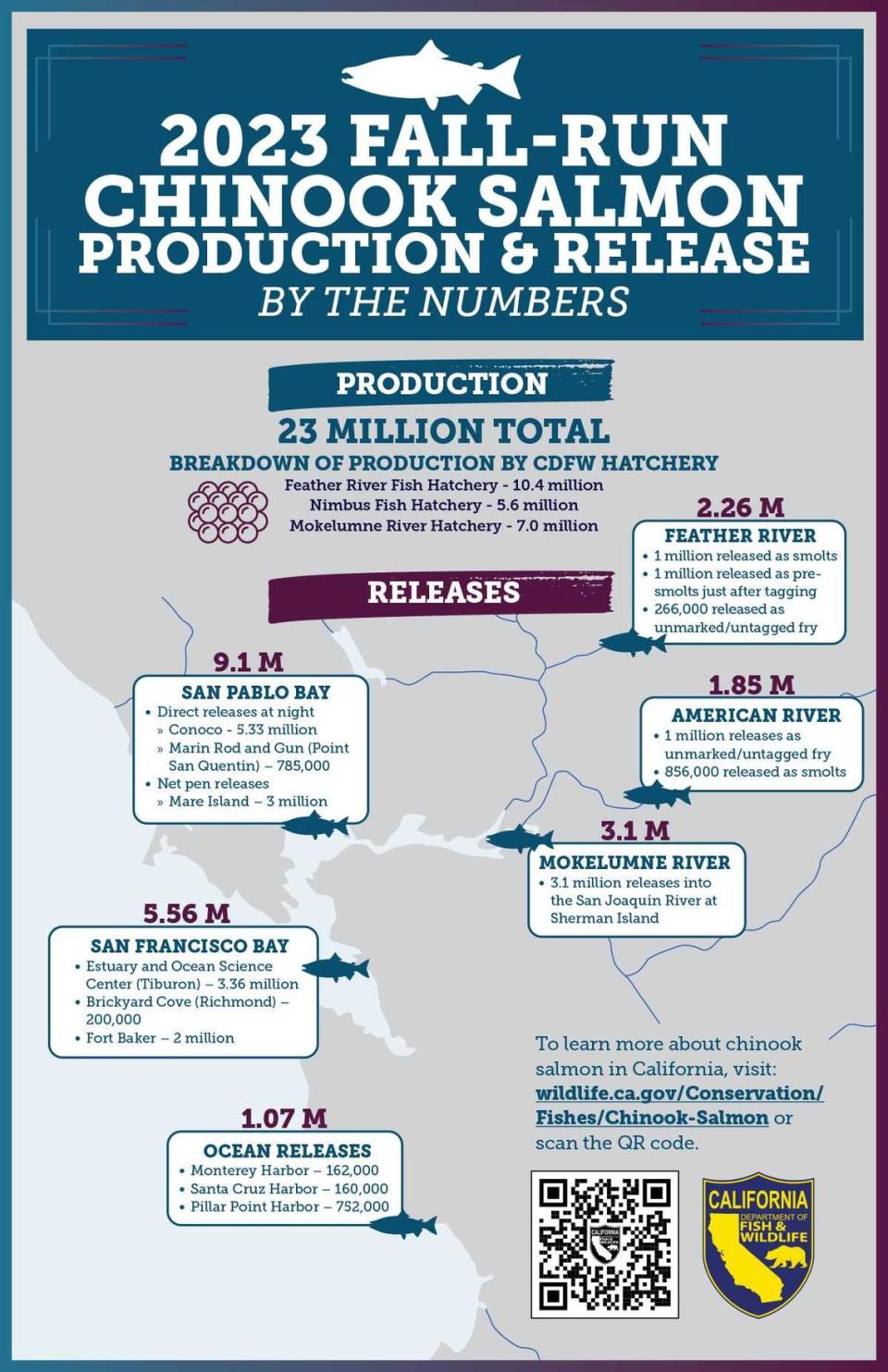23 million Chinook salmon were released throughout California’s Central Valley. Here’s why
The California Department of Fish and Wildlife announced Wednesday it has completed its release of approximately 23 million fall-run Chinook salmon raised in Central Valley fish hatcheries.
The 23 million salmon raised and released by state officials this year is a 15% increase from the count in 2022. This year’s production goals were expanded to try to help Chinook salmon overcome the consequences of the drought in which water temperatures rose and water flows fell throughout the Valley during critical salmon spawning periods, officials said.
Those conditions, coupled with a thiamine deficiency that affects reproduction, have reduced in-river spawning success over the past several fall runs.
The facilities, which help Chinook salmon and steelhead trout migrate in rivers across Central California waterways, include the Nimbus Fish Hatchery, the Feather River Fish Hatchery, the Mokelumne River Fish Hatchery and the Merced River Hatchery.
Fish and wildlife officials said they tried differing strategies to improve survival including conducting in-river salmon releases in Feather and American rivers to capitalize on the high water flows associated with winter storms that lingered into the spring. This was previously done in 2020.
Other, separate strategies included recording the genetic signatures of over 1 million salmon fry released into the American River in February to evaluate their success, releasing smaller salmon fry in the Feather River in the spring to diversify hatchery fish size and timing and 25% of the adult salmon released have coded-wire tags for monitoring purposes.
Salmon were also released at new locations in the Bay Area like Tiburon’s Estuary and Ocean Science Center in partnership with San Francisco State University, Point San Quentin in partnership with the Marin Rod and Gun Club and Brickyard Cove in Richmond in partnership with the city and the Golden Gate Salmon Association, according to state wildlife officials.
At these locations, young salmon were released at night on strong, outgoing tides to reduce bird predation and encourage seaward migration, officials said.


